Back to the future for England's railways?
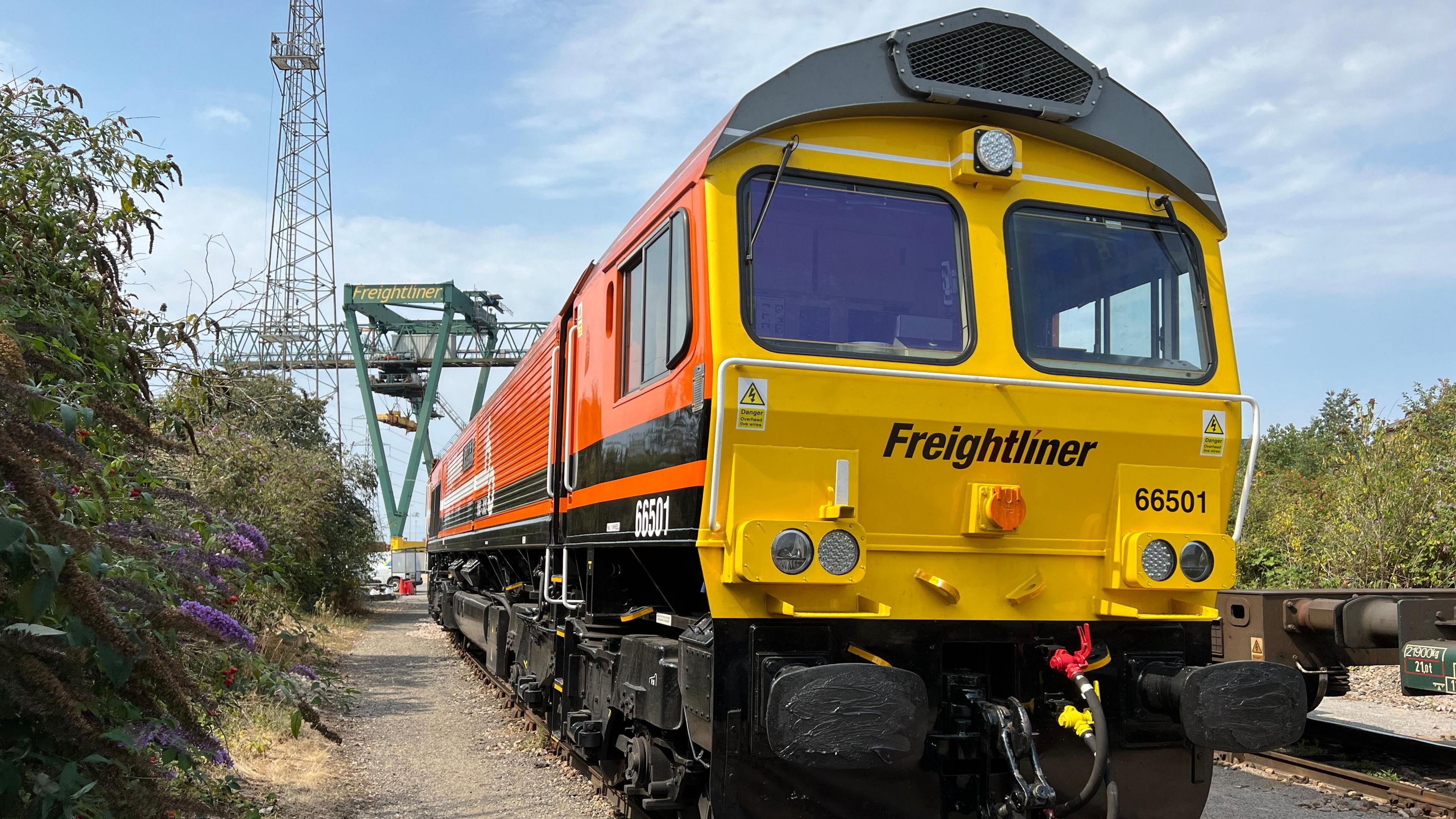
The newly-launched container service to Doncaster prepares to leave Southampton
- Published
Joe Campbell travels a section of the new freight rail service between Southampton and Doncaster as he takes a deep dive into the future of England's railways.
The opening of the world's first railway 200 years ago, began a process that would turbocharge the industrial revolution and go on to transform the world.
Southampton, where we begin our journey, grew into a port exporting goods and people around the globe, in large part thanks to the railway.
It was goods not people that led to the building of the Stockton to Darlington line two centuries ago and, while the route we are taking is now better known for carrying commuters, it remains one of the country's major arteries for conveying imports and exports.
September is the busiest time of year for the port. The metal boxes being craned off ships at the quayside are packed with goods bound for the shops ahead of Christmas.
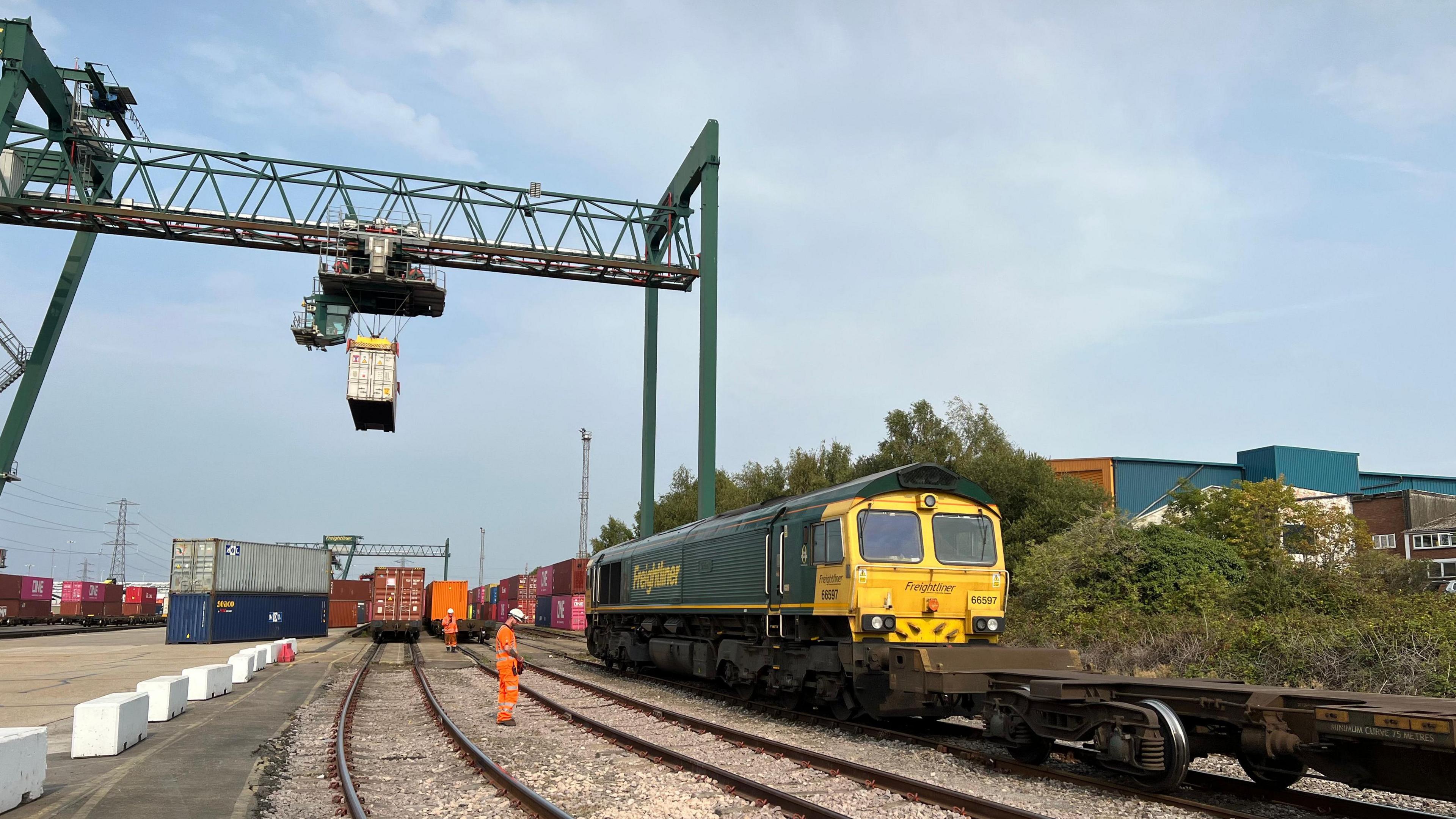
Southampton Maritime is one of two rail terminals within the city's docks
Freightliner is the biggest player in the business of moving containers from the port by rail.
Founded as part of the Beeching Review - better known for closing lines than opening new services - the firm celebrates its 60th birthday this year.
That might not seem much in the context of Rail 200 but those decades have seen plenty of change.
Originally part of British Rail, it was spun off and then privatised like the rest of the industry in the 1990s.
Now, while the passenger services of South Western Railway this year became the first to be taken back into public ownership as part of the government's renationalisation plan, most of the freight operators will remain in private hands.
Navigating the change is a concern for company boss Tim Shoveller, who is travelling north with us.
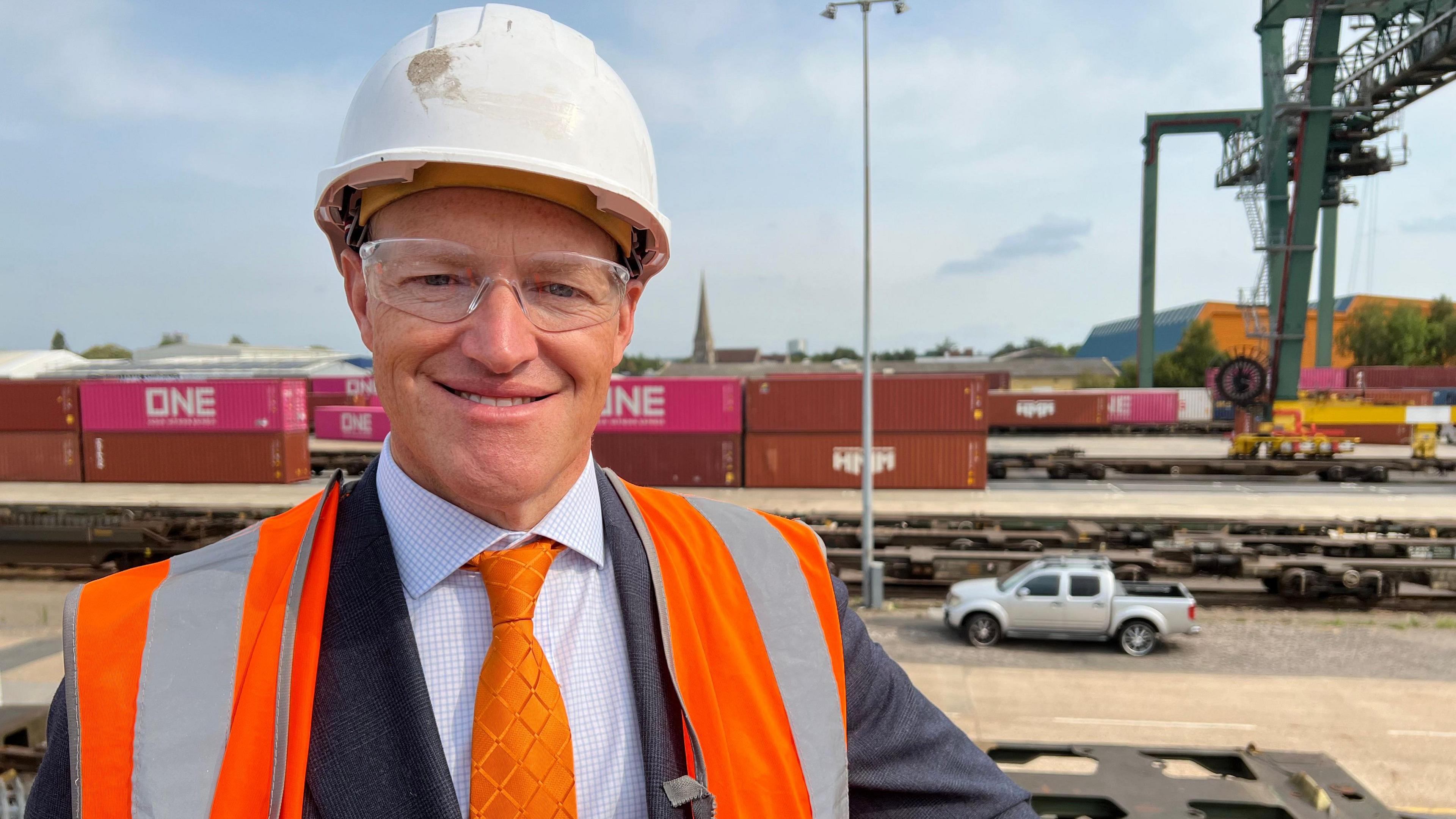
Freightliner boss Tim Shoveller has managed private and publicly-owned railway businesses
He worries legislation to create a new state-run Great British Railways (GBR) could sideline the freight sector.
"We want to be sure that GBR don't just see freight as something to do after they've run a passenger train. It's integral to the foundation of the railway," he says.
Firms like his will be guaranteed access to the network but are concerned what happens when the new publicly-owned industry wants to do something that could disadvantage them.
Incentives from port operator DP World have already seen an increase in firms moving containers out of Southampton, switching from road to rail. Customs agents face a £10 charge for every box being offloaded from ships at the port.
That money has funded a £70 sweetener for every container on shorter journeys by rail. Those businesses relying on the train for longer routes get their money back.
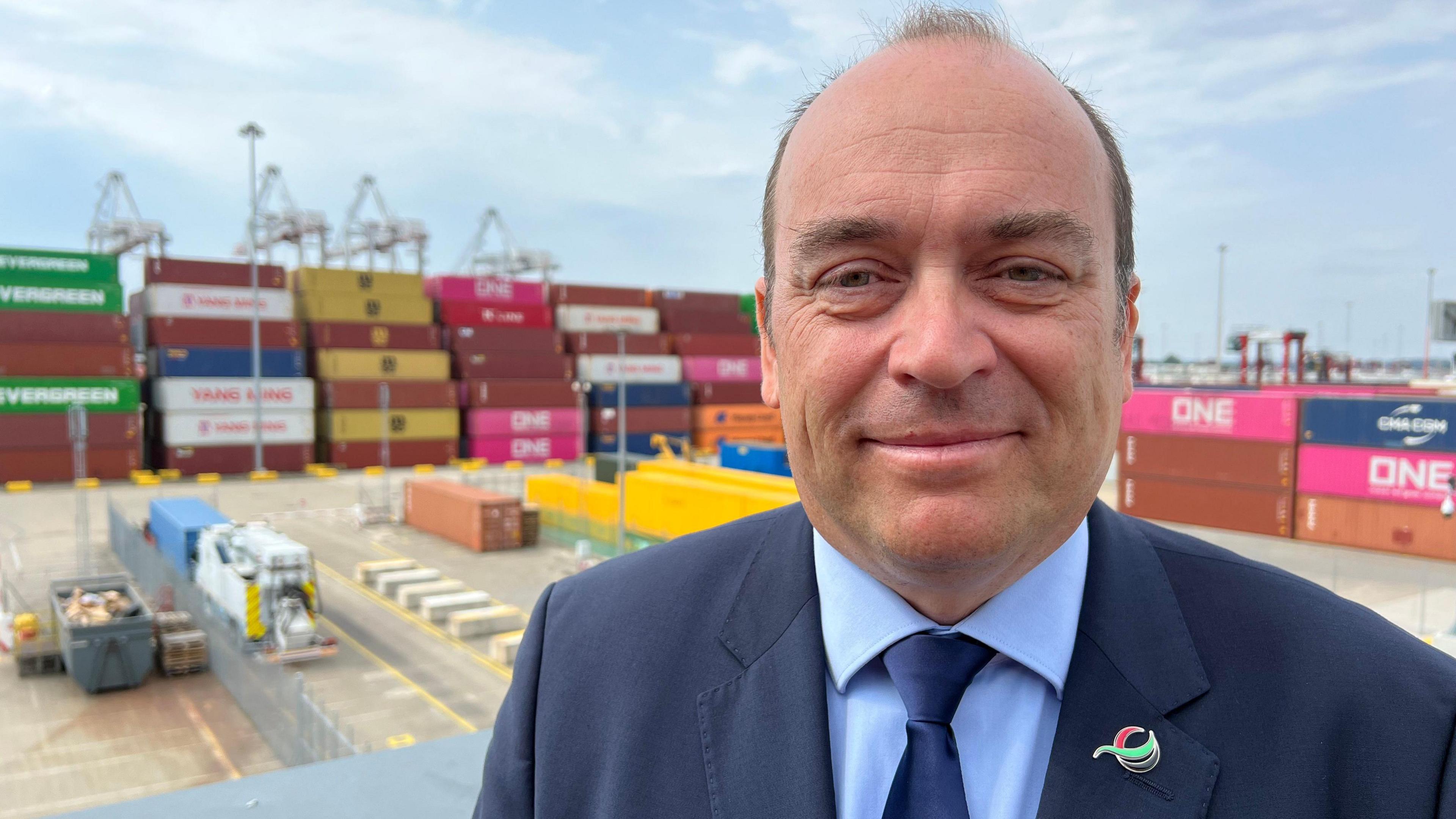
The number of containers being transported away from the port by rail is up, according to John Trenchard of operator DP World
"Back in 2023, around 20% of all the containers that came through Southampton went by rail," he says. "Today, we're up to almost 30%.
"We've also managed to take around 32,000 tonnes of CO2 out of our customers' supply chains by offering this incentive."
Other sweeteners are on offer too. For example, the train we are on is a new service. Freightliner is enjoying a six-month holiday on track access charges from Network Rail as it tries to build up business on the route.
But while its emissions may be lower than a fleet of trucks, we are still travelling in a diesel-powered locomotive.
Mr Shoveller explains the amount of power available from the third rail system on this route means an electric locomotive would struggle to handle anything more than this relatively lightly loaded freight.
At Basingstoke, there is a change of driver before the train continues to Reading, where the third rail stops.
At one time, overhead power along the whole route was considered but Freightliner's boss says that is no longer an option.
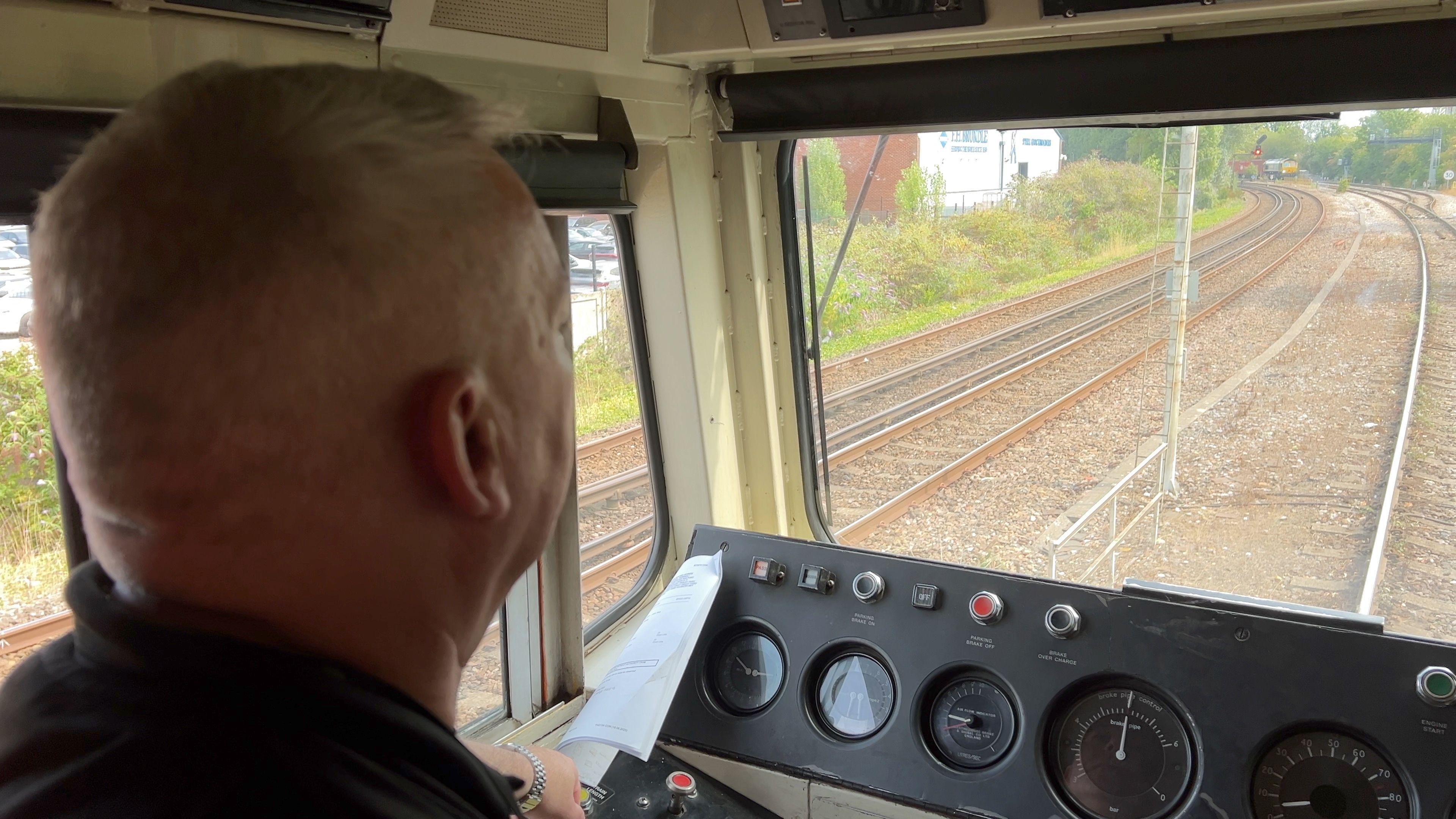
Beyond Basingstoke, diesel power is the only option until our train gets to Reading
The alternative is a locomotive that can switch between third rail, overhead power and a diesel engine.
"The trouble is, those locomotives are going to be about £6m each," Mr Shoveller says. "I'd love to buy one but there's not a chance of being able to do that with the economics of rail freight as they currently are."
Leaving the train at Basingstoke, I am in commuter land but things have changed.
Former rail manager Mark Smith is known to his followers on social media as "The Man in Seat 61", from where he dispenses ticketing advice.
"The classic weekly, monthly, annual season tickets are, frankly, no longer fit for purpose," he says.
"It is all down to the way work patterns have changed since Covid, with many jobs now only requiring two or three days in the office each week.
"On the cost side, people are typically taking Monday or Friday off but the railway still needs all those expensive trains for carrying people on Tuesday, Wednesday and Thursday."
He says there is unlikely to be a solution until the promised GBR emerges from the renationalisation tunnel.
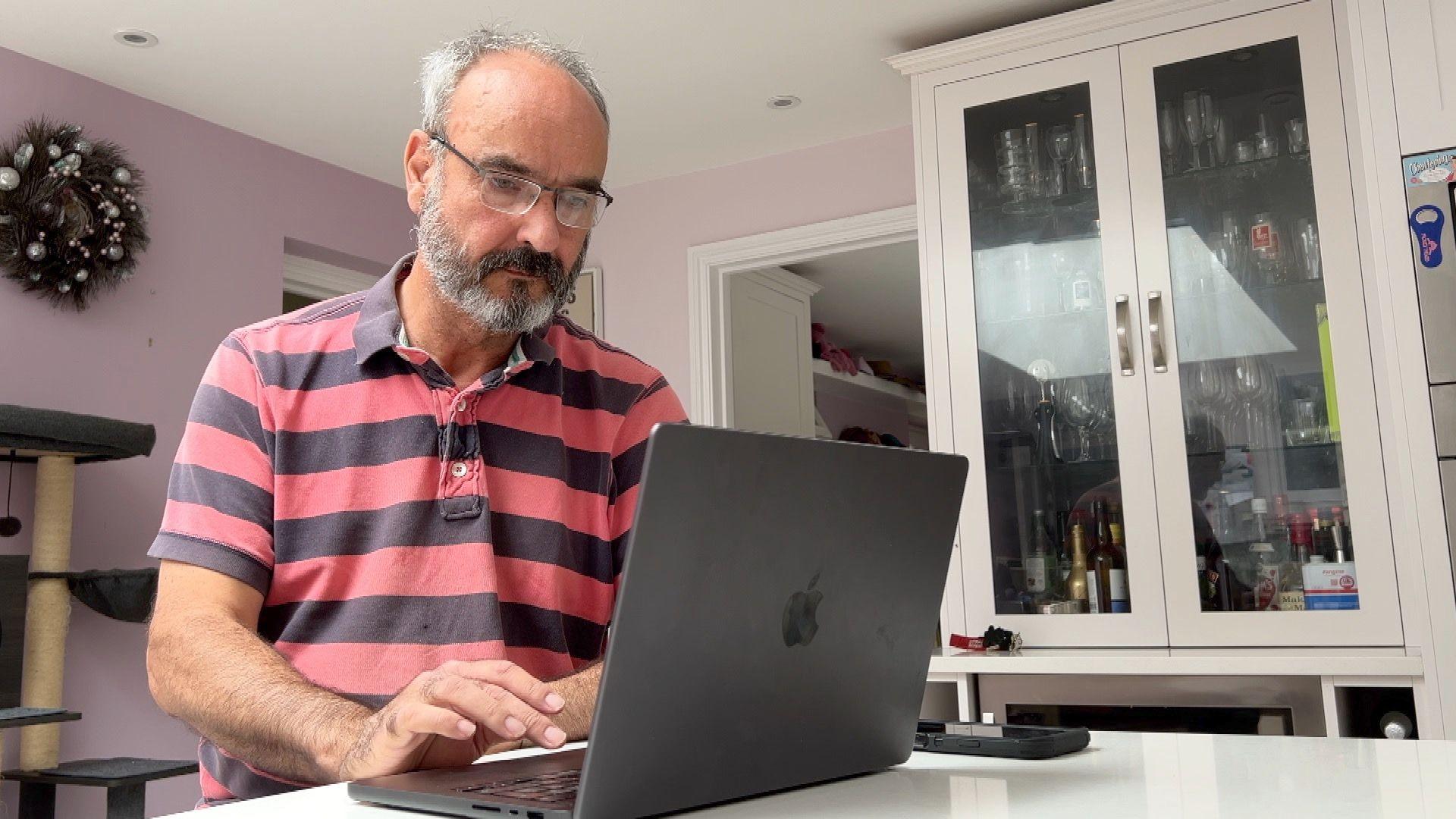
Ticketing guru Mark Smith typically works from home like many former daily train travellers
"They need to be pulling it together and and putting together some sort of plan for going forward," says Mr Smith. "I don't think it's going to work if we let different train operators come up with different solutions in different places."
Ironically, the Buckinghamshire village where he lives is currently off the rail network.
It lies in a spot surrounded by road closures and diversions as two of the country's newest rail lines are built through that corner of the Home Counties.
East West Rail follows the route of the old Varsity Line, linking Oxford and Cambridge. It is here that it crosses the route of HS2, itself an attempt to recreate the capacity lost when the Great Central Railway route was closed in the 1960s.
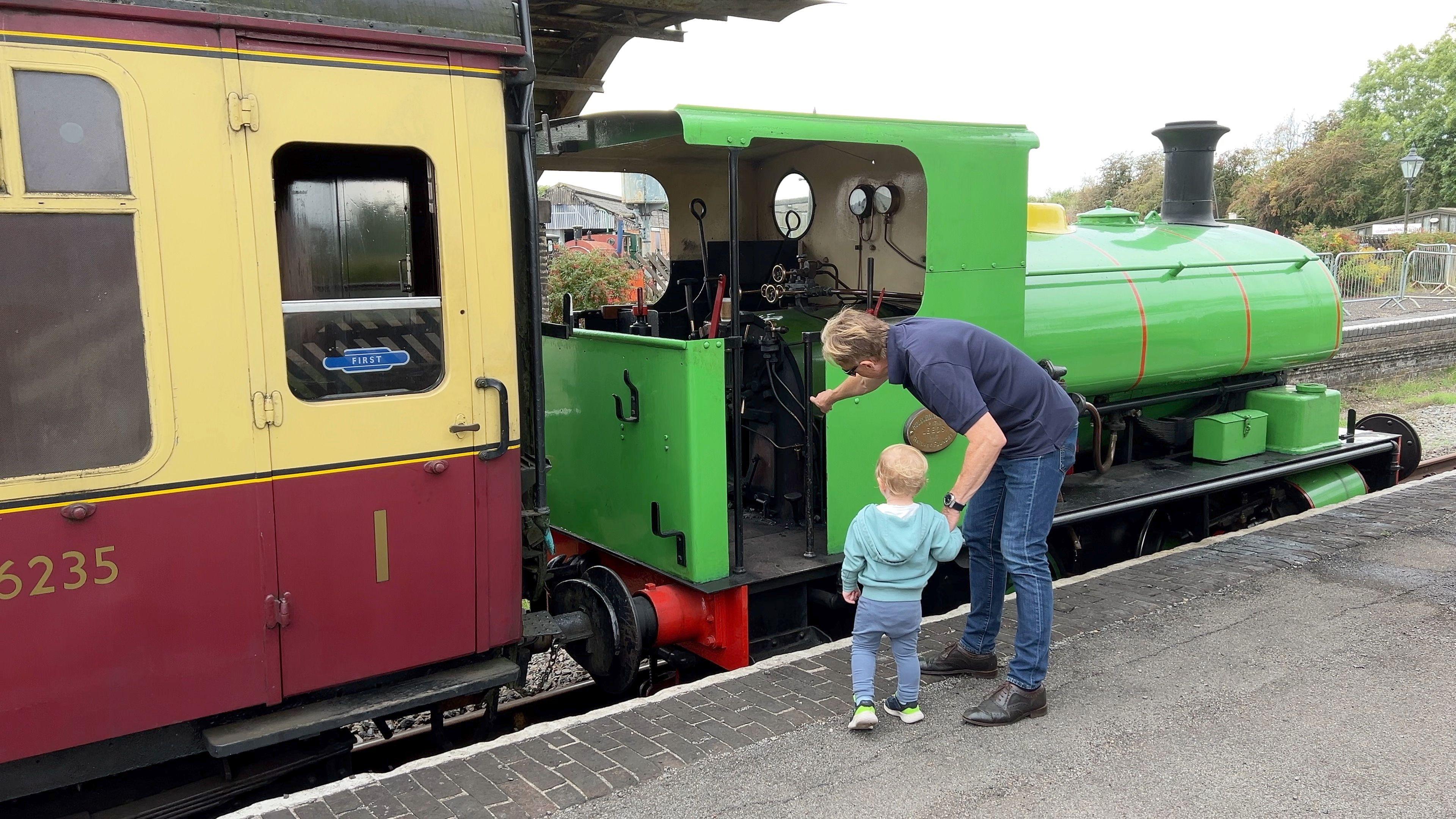
Now a heritage site, Quainton used to be on the now closed line linking London with Sheffield and Manchester
The Buckinghamshire Railway Centre sits on the route of the old line and alongside the HS2 workings.
General manager Steve Green says the rise of road transport hit the railway's profitability.
"Road transport was easier, it took over," he says, as a steam train comes to a halt beneath the footbridge we are standing on.
"I think we are seeing the opposite now.," he says. "Everyone is looking at ways of increasing rail connectivity, to take all the excess transport back off the roads."
But putting the railways back is not proving easy.
In the BBC archive, I find a clip of former jockey, now pub landlord and county councillor, Frank Mahon, confronting construction workers from HS2.
On the day I visit him, almost a decade after the incident was filmed, the railway still looms large in his life.
At his pub in Steeple Claydon, he is pressing officials to get a bus link reinstated as soon as possible after a local road was closed for the works.
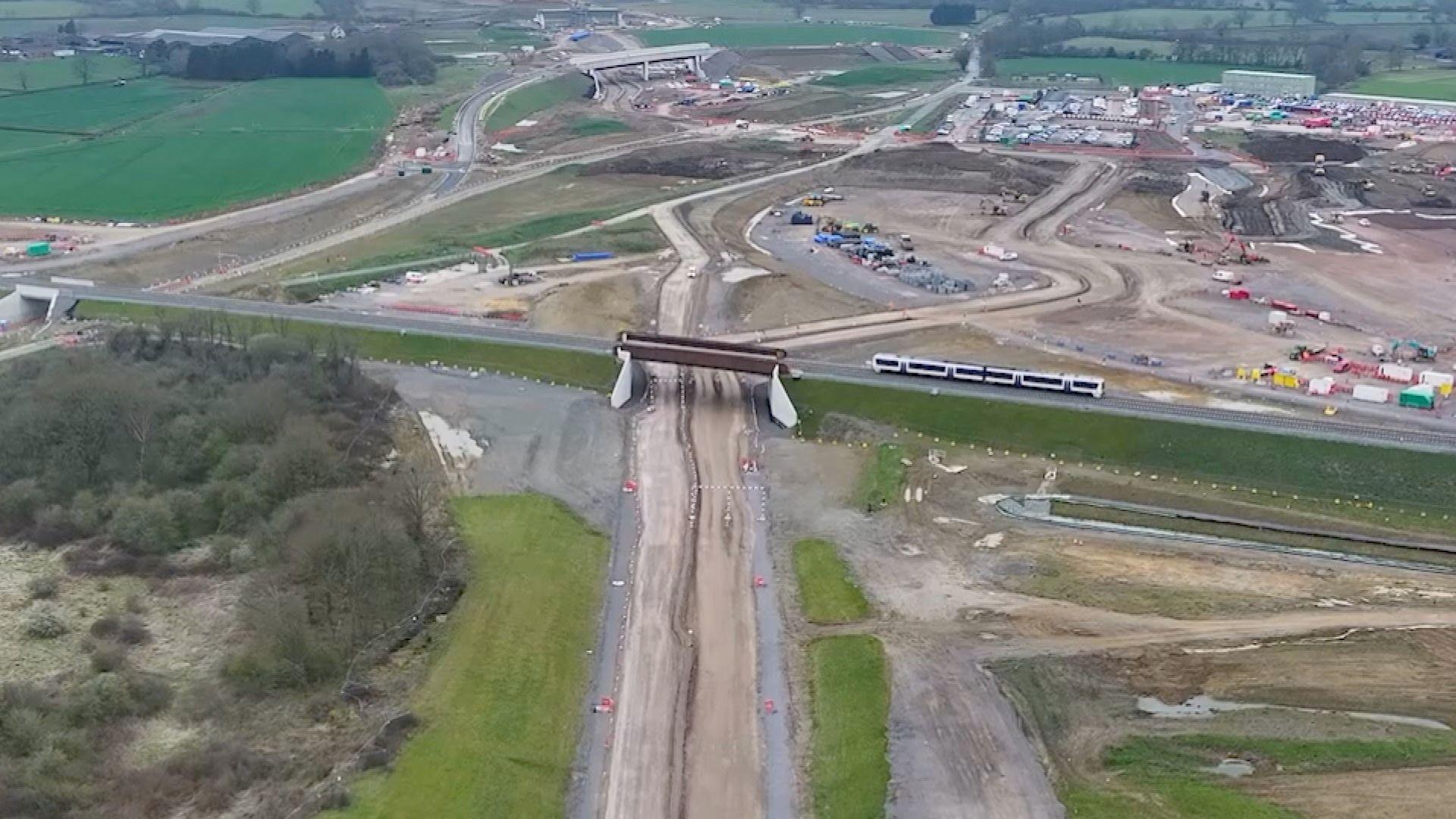
Building new lines like HS2 and East West Rail has proved controversial
"We knew there was going to be disruption but we never imagined it was going to be as bad as it is and has been over the last six years," he says.
At least the now completed section of East West Rail will have a station in nearby Winslow when it opens.
A few days earlier, I took a trip to Milton Keynes, where the team managing its construction is based. Of course, it did not go without a hitch.
The train I was due to catch was more than half an hour late because of a points failure and then stopped short at Bletchley, where the new line is due to link up with the West Coast mainline.
Natalie Wheble, director of engagement at the business, had admitted delivering rail projects would always be complex.
"But the benefits that the infrastructure provides last for generations and that is really at the heart of East West Rail, to make sure the communities along the route have those benefits far into the future."
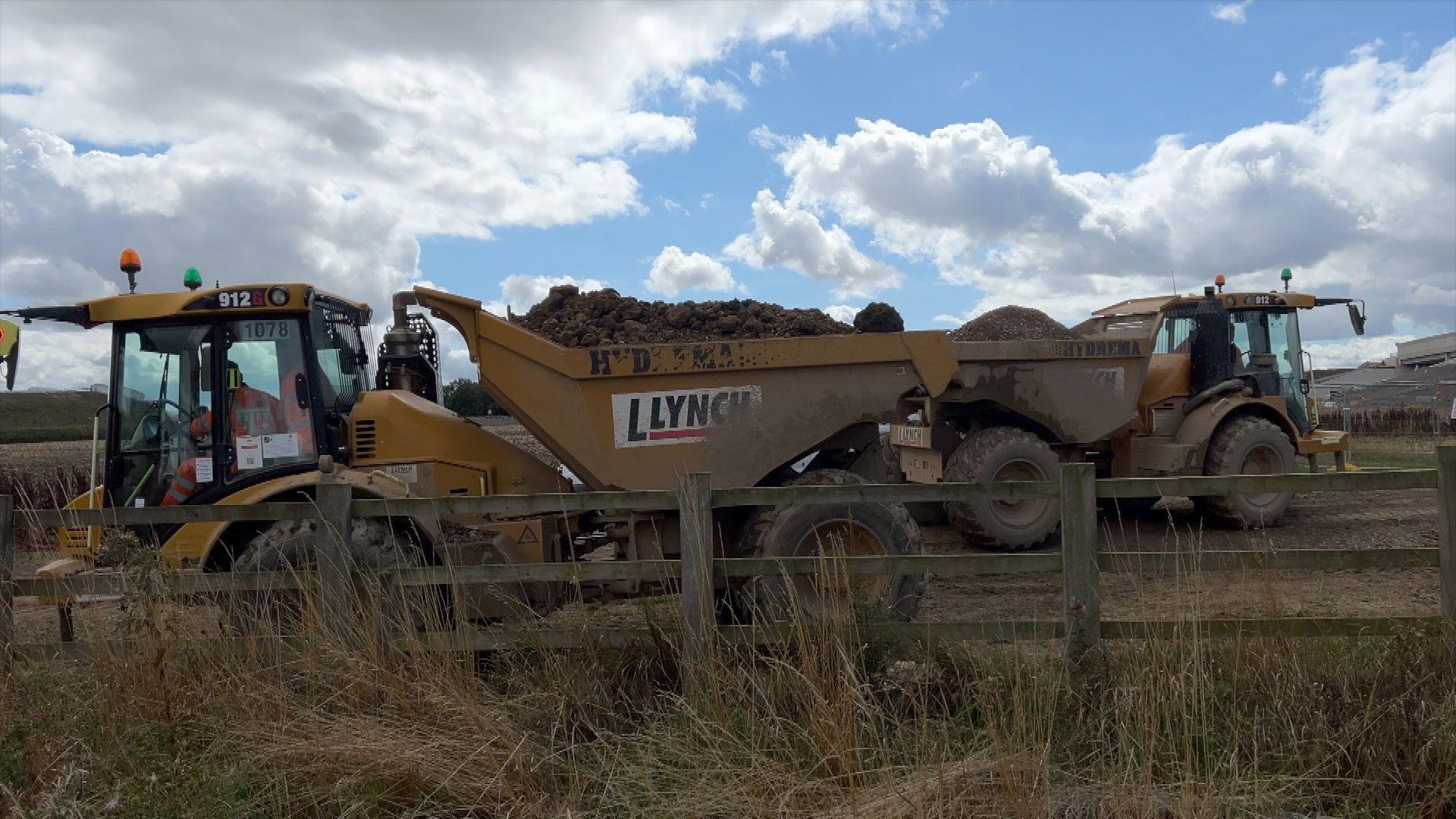
HS2 is currently undergoing a "reset" to establish a realistic schedule and costs
Leaving Frank Mahon's pub, there is no underestimating the scale of building Britain's newest rail line 200 years after that first route between Stockton and Darlington.
It does not take long before I come to another road closure and lengthy diversion.
A sign says "no HS2 construction traffic", quickly followed by another warning of a "failed road surface", perhaps suggesting that not everybody has been paying attention to the first one.
It is worth remembering that the railway has always been a disruptor and, whether it is the impact of construction or the politics surrounding it, that looks set to continue.
Get in touch
Do you have a story BBC Berkshire should cover?
You can follow BBC Berkshire on Facebook, external, X (Twitter), external, or Instagram, external.